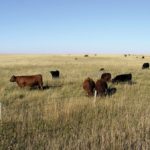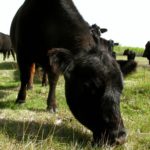
Tag Archives Forages

Saline-tolerant AC Saltlander under the microscope
New research shows forage's potential cost benefit

Good grazing means manage for what you want
Soil and grass health is vital to achieve sustainability in our cattle industry

An ecological approach to forage research
Top AAFC research scientist shares his thoughts on growing forages

A plug for grass-legume mixes for grazing
An ideal pasture depends on the goals of the producer

Forage testing more complicated, but rations more accurate
Forage testing has evolved significantly in the past three to five years, with more precise tools for livestock ration development

Spurge purge tests bovine palates
Goats and sheep can eat leafy spurge. Can cattle be trained to do the same?

Don’t call it ‘cover,’ call it ‘feed’
How sacrificing some silage yield can gain another six to 10 tons of forage per acre

Feed grain outlook for 2018
Market Talk with Jerry Klassen

Pasture blends
Research on the Record with Reynold Bergen

Legumes are best, but…
Nova Scotia researchers are looking at ways to maintain their percentage in forage mixtures under grazing



